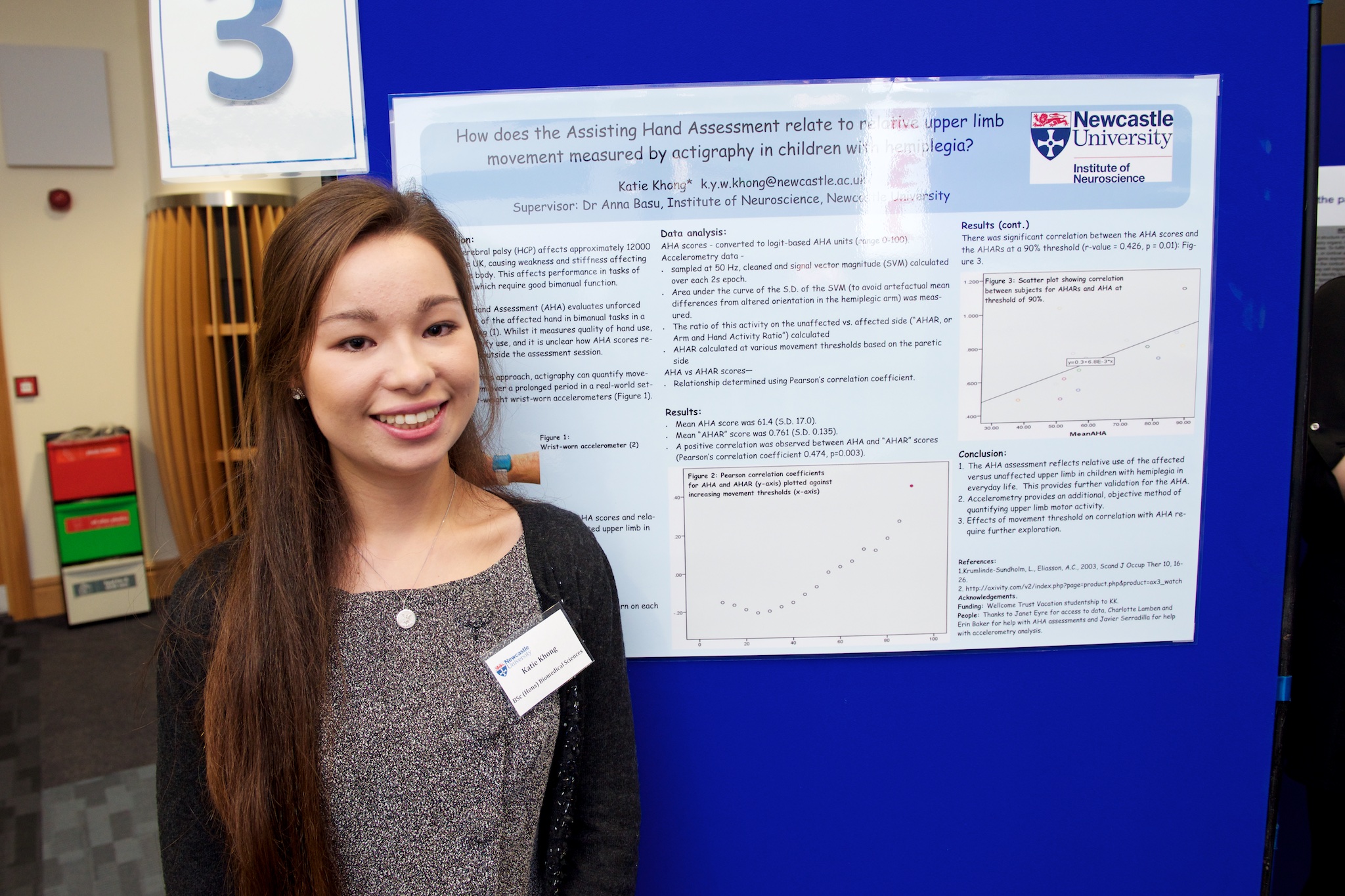2014 participants
 Katie Khong
Katie Khong
- Bsc (Hons) Biomedical Sciences
- How does the Assisting Hand Assessment relate to relative upper limb movement measured by actigraphy in children with hemiplegia?
Cerebral palsy refers to movement and posture disorders arising around the time of birth. Functional impairment of the limbs results in difficulty with daily tasks and activities. Children with hemiplegic cerebral palsy have difficulty with movement on only one side of the body. Assisting Hand Assessment records on video how children with unilateral disability perform tasks while Actigraphy with wrist activity monitoring is used to measure hemiplegic upper limb function in everyday use. Together, the two tools allow us to understand how hemiplegia affects upper limb function. This type of research should lead to better management of hemiplegic cerebral palsy.
Funding source: Wellcome Trust
